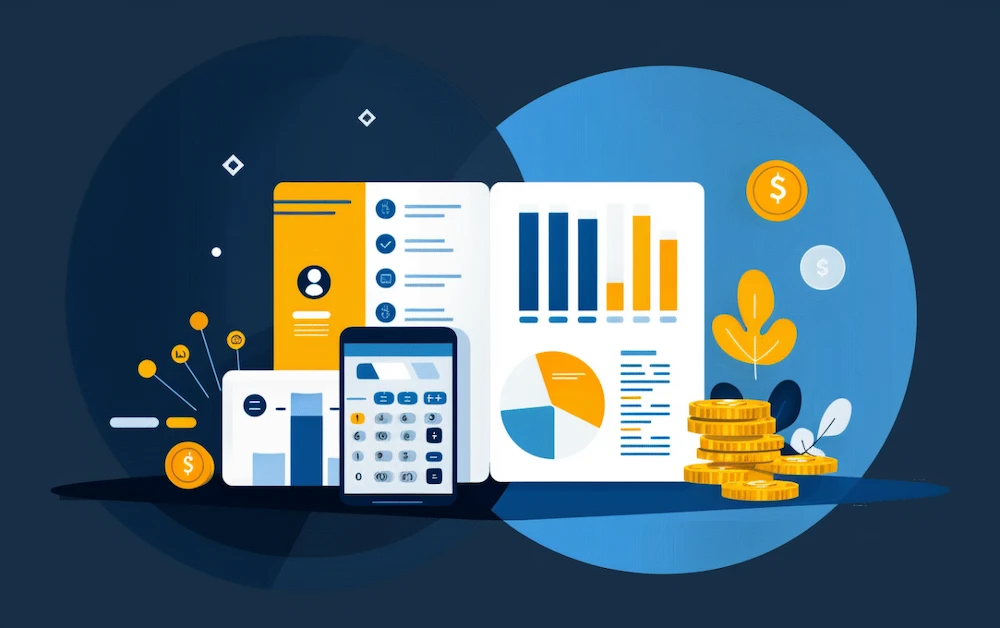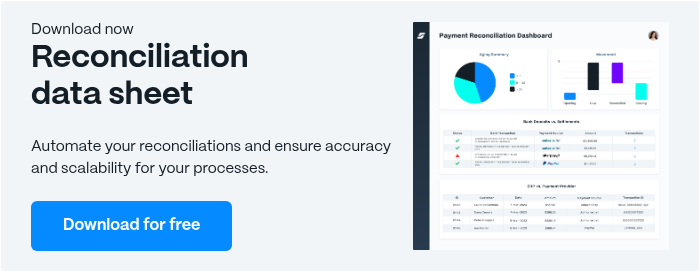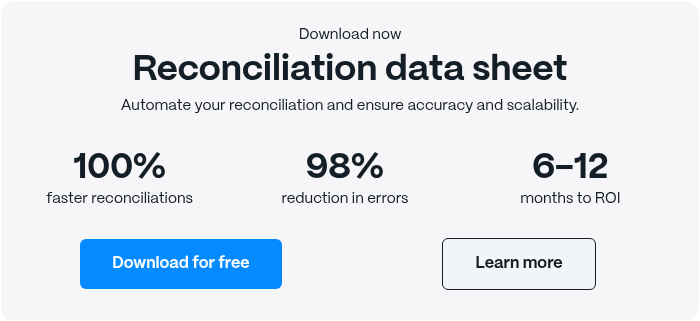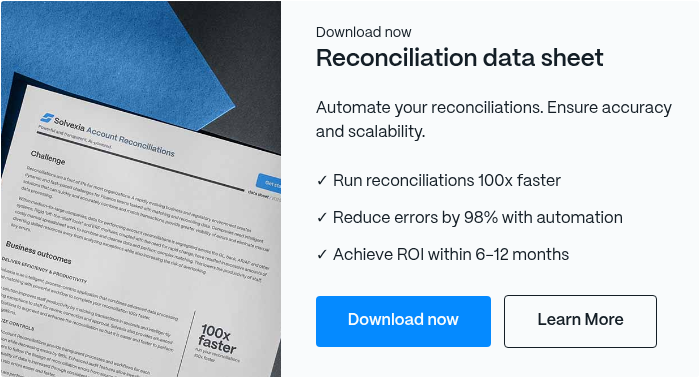Mastering Revenue Reconciliation: Key Steps for Ensuring Financial Accuracy

Revenue reconciliation is a critical but often overlooked process in financial management, especially for SaaS and startup companies. As businesses grow, transactions become more complex, and accurate reconciliation becomes essential for maintaining financial integrity. This process goes beyond balancing the books—it's about ensuring compliance with accounting standards, detecting errors or fraud, and building trust with stakeholders.
Whether you're a CFO or a founder, mastering revenue reconciliation is crucial. This guide will walk you through its fundamentals, highlight its importance, and offer practical strategies to optimize the process for your business, especially in the SaaS sector.
Coming Up
What is Revenue Reconciliation?
Revenue reconciliation is a critical accounting process that ensures the accuracy and completeness of a company's financial records. It involves comparing and aligning revenue data from various sources to identify and resolve any discrepancies. This reconciliation process is essential for maintaining financial integrity and providing stakeholders with reliable financial information.
At its core, revenue reconciliation is about matching the cash received with the revenue recognized in a company's books. This cash-to-revenue reconciliation helps verify that all income is properly accounted for and that there are no inconsistencies between different financial systems or reports.
The reconciliation process typically involves:
- Gathering data from multiple sources (e.g., bank statements, invoices, accounting software)
- Comparing this data to identify any differences
- Investigating and explaining these differences
- Making necessary adjustments to ensure all records align
For businesses of all sizes, but especially for growing companies in the SaaS sector, mastering revenue reconciliation is crucial. It not only ensures financial accuracy but also plays a vital role in compliance, auditing, and strategic decision-making.
By regularly performing revenue reconciliation, companies can:
- Detect and prevent errors or fraud
- Ensure compliance with accounting standards and regulations
- Provide accurate financial reports to stakeholders
- Make informed business decisions based on reliable financial data
As we delve deeper into the topic, we'll explore how revenue reconciliation differs from revenue recognition, its key benefits, and how to effectively manage this critical financial process.
Revenue Reconciliation vs. Revenue Recognition
While revenue reconciliation and revenue recognition are both crucial accounting processes, they serve different purposes and occur at different stages of the financial reporting cycle. Understanding the distinction between these two concepts is essential for accurate financial management.
Revenue Recognition
Revenue recognition is the process of recording revenue in a company's financial statements when it is earned, regardless of when the cash is received. This concept is governed by specific accounting standards (such as ASC 606 for US GAAP or IFRS 15 for international standards) that dictate when and how much revenue should be recognized.
Key points about revenue recognition:
- It determines when a company can count money it expects to receive as revenue
- It's based on the completion of performance obligations, not cash receipt
- It ensures that revenue is matched with the period in which it was earned
Revenue Reconciliation
Revenue reconciliation, on the other hand, is the process of verifying that the revenue recognized in the financial statements matches the actual cash received and other supporting documentation. It's a crucial step in the revenue cycle that ensures the accuracy of financial reporting.
Key points about revenue reconciliation:
- It compares recognized revenue with cash receipts and other financial data
- It identifies and explains any discrepancies between different financial records
- It helps detect errors, timing differences, or potential fraud
- It's typically performed periodically (e.g., monthly or quarterly) as part of the closing process
The Relationship Between Recognition and Reconciliation
While distinct, these processes are closely related:
- Revenue is first recognized according to accounting standards
- Later, during reconciliation, this recognized revenue is checked against actual cash receipts and other financial data
- Any discrepancies found during reconciliation may lead to adjustments in how revenue is recognized in the future
Understanding this relationship is crucial for maintaining accurate financial records and ensuring compliance with accounting standards. It's particularly important in industries with complex revenue models, such as SaaS, where revenue may be recognized over time while cash is received upfront.
By mastering both revenue recognition and reconciliation, companies can ensure their financial statements accurately reflect their economic reality, providing stakeholders with reliable information for decision-making.
Key Benefits of Revenue Reconciliation
Revenue reconciliation is a critical process that offers numerous advantages to businesses, particularly in the SaaS industry and other sectors with complex revenue models. Let's explore the key benefits of implementing a robust revenue reconciliation process:
- Ensures Financial Accuracy
- Identifies and corrects discrepancies in financial records
- Provides a clear and accurate picture of a company's financial health
- Helps maintain the integrity of financial statements
- Enhances Fraud Detection
- Regularly comparing financial data from various sources helps spot unusual patterns or discrepancies
- Acts as an early warning system for potential fraudulent activities
- Protects the company from financial losses due to internal or external fraud
- Improves Revenue Cycle Management
- Optimizes the entire revenue cycle from order to cash
- Identifies bottlenecks or inefficiencies in the billing and collection processes
- Helps in forecasting and managing cash flow more effectively
- Ensures Regulatory Compliance
- Assists in adhering to accounting standards and regulations (e.g., GAAP, IFRS)
- Provides an audit trail for financial transactions
- Reduces the risk of penalties or legal issues due to non-compliance
- Builds Stakeholder Trust
- Demonstrates financial transparency to investors, board members, and other stakeholders
- Increases confidence in the company's financial reports
- Supports better decision-making based on accurate financial data
- Facilitates Accurate SaaS Revenue Recognition
- Helps manage complex subscription models and recurring revenue streams
- Ensures proper handling of deferred revenue and revenue recognition over time
- Provides clarity on the financial impact of different pricing models or contract terms
- Supports Scalability
- As companies grow, especially in the SaaS sector, revenue reconciliation becomes increasingly important
- Helps maintain financial accuracy and efficiency even as transaction volumes increase
- Supports the implementation of automated reconciliation tools to handle growth
- Improves Financial Forecasting
- Provides accurate historical data for more reliable future projections
- Helps identify trends and patterns in revenue streams
- Supports better budgeting and strategic planning
- Enhances Audit Readiness
- Regular reconciliation makes the audit process smoother and less time-consuming
- Reduces the likelihood of material misstatements in financial reports
- Provides clear documentation to support financial claims during audits
- Optimizes Cash Management
- Ensures all earned revenue is properly accounted for and collected
- Helps identify and resolve issues with delayed payments or disputed invoices
- Improves overall cash position and financial stability
By implementing a thorough revenue reconciliation process, businesses can enjoy these benefits while building a strong foundation for financial success. This is particularly crucial for SaaS companies and startups, where accurate financial reporting is essential for growth and investor confidence.
Solutions like Solvexia help companies achieve these benefits by automating the reconciliation process, reducing manual errors, and providing real-time visibility into financial data.
How to Perform Revenue Reconciliation: A Step-by-Step Guide
Revenue reconciliation is a critical process for ensuring financial accuracy. Here's a comprehensive guide to help you perform this essential task effectively:
1. Gather Necessary Data
- Collect all relevant financial records:
- Sales invoices
- Bank statements
- Payment gateway reports
- Accounting software reports
- Customer contracts (especially important for SaaS companies)
2. Organize and Categorize Data
- Sort transactions by date, customer, or product/service type
- Separate recurring revenue from one-time payments
- Identify any deferred revenue that needs special handling
3. Compare Revenue Sources
- Cross-reference sales invoices with bank deposits
- Match payment gateway transactions with accounting records
- Verify that recognized revenue aligns with contractual terms
4. Identify Discrepancies
- Look for:
- Missing transactions
- Duplicate entries
- Timing differences between recognition and cash receipt
- Incorrect amounts or misclassifications
5. Investigate and Resolve Differences
- For each discrepancy:
- Trace back to original documents
- Determine the root cause (e.g., system error, human error, timing issue)
- Document your findings
6. Make Necessary Adjustments
- Create journal entries to correct errors
- Update deferred revenue schedules if needed
- Ensure adjustments comply with relevant accounting standards
7. Reconcile Accounts Receivable
- Compare the accounts receivable ledger with customer statements
- Identify and resolve any differences in outstanding balances
Handle Deferred Revenue Reconciliation
- Review deferred revenue balances
- Ensure proper recognition of revenue over time, especially for subscription-based services
- Adjust deferred revenue schedules as necessary
9. Perform Bank Reconciliation
- Match bank statement transactions with book entries
- Identify and investigate any unreconciled items
10. Review and Validate
- Double-check all reconciliations and adjustments
- Ensure the final reconciled balance matches across all systems and reports
11. Document the Process
- Create a detailed record of the reconciliation process
- Note any unusual items or recurring issues
- Maintain an audit trail of all adjustments made
12. Analyze and Report
- Summarize the reconciliation results
- Highlight any significant discrepancies or trends
- Prepare reports for management review
13. Implement Improvements
- Based on your findings, identify areas for process improvement
- Consider automating parts of the reconciliation process to reduce errors and save time
14. Regular Review
- Establish a consistent schedule for revenue reconciliation (e.g., monthly, quarterly)
- Continuously refine your process based on lessons learned
By following these steps, you can ensure a thorough and accurate revenue reconciliation process. Remember, the specifics may vary depending on your business model, especially for SaaS companies dealing with complex subscription revenues and deferred revenue recognition.
Common Challenges in Revenue Reconciliation for SaaS Companies
SaaS companies face unique challenges when it comes to revenue reconciliation due to their complex business models and subscription-based pricing. Understanding these challenges is crucial for developing effective strategies to overcome them. Here are some of the most common issues SaaS companies encounter:
- Complex Subscription Models
- Multiple subscription tiers and pricing plans can complicate the reconciliation process.
- Frequent changes in subscription levels (upgrades, downgrades) require careful tracking.
- Challenge: Ensuring all revenue is correctly attributed to the right subscription tier and time period.
- Deferred Revenue Management
- SaaS companies often receive payment upfront for services delivered over time.
- Challenge: Properly recognizing revenue over the subscription period while reconciling with cash received.
- Proration and Mid-cycle Changes
- Customers may change their subscriptions mid-billing cycle.
- Challenge: Accurately calculating and reconciling prorated amounts for partial periods.
- Volume-based Pricing
- Some SaaS products charge based on usage or number of users.
- Challenge: Reconciling variable revenue with fixed subscription fees and ensuring accurate usage tracking.
- Multi-currency Transactions
- Global SaaS companies often deal with multiple currencies.
- Challenge: Managing exchange rate fluctuations and ensuring accurate conversion in financial records.
- Integration of Multiple Payment Gateways
- SaaS companies may use various payment processors for different regions or purposes.
- Challenge: Consolidating data from multiple sources and ensuring consistency across all platforms.
- Free Trials and Promotional Offers
- Many SaaS companies offer free trials or discounts to attract customers.
- Challenge: Tracking when free trials convert to paid subscriptions and reconciling promotional discounts.
- Refunds and Chargebacks
- Handling customer refunds or credit card chargebacks can complicate reconciliation.
- Challenge: Ensuring these transactions are properly reflected in both revenue recognition and cash records.
- Revenue Recognition Standards Compliance
- Adhering to ASC 606 or IFRS 15 standards for revenue recognition.
- Challenge: Aligning reconciliation processes with these complex accounting standards.
- Data Volume and Automation
- SaaS companies often deal with a high volume of small transactions.
- Challenge: Implementing efficient automation tools to handle large datasets without sacrificing accuracy.
- Contract Modifications
- Customers may negotiate custom terms or change their contracts mid-subscription.
- Challenge: Reflecting these changes accurately in both billing and revenue recognition.
- Dunning and Failed Payments
- Managing the reconciliation process for failed payments and subsequent successful retries.
- Challenge: Ensuring the timing of revenue recognition aligns with actual cash receipt, especially when payments are delayed.
- Multi-year Contracts
- Some enterprise SaaS deals involve multi-year commitments with various payment terms.
- Challenge: Reconciling long-term contracts with short-term revenue recognition and cash flow.
- Bundled Services
- SaaS offerings may include additional services or products beyond the core subscription.
- Challenge: Allocating revenue correctly across different components of the bundle.
By understanding these challenges, SaaS companies can develop more robust revenue reconciliation processes. Implementing specialized reconciliation software, establishing clear policies for handling edge cases, and regularly reviewing and updating reconciliation procedures can help overcome these obstacles. Additionally, fostering close collaboration between finance, sales, and customer success teams is crucial for maintaining accurate and timely revenue data in the fast-paced SaaS environment.
Conclusion
Revenue reconciliation is essential for maintaining financial accuracy and transparency. For SaaS businesses, where revenue models are often complex, mastering this process ensures smoother audits, better cash flow management, and stronger stakeholder confidence.
By implementing efficient reconciliation practices and leveraging automation tools like Solvexia, you can reduce errors, save time, and gain valuable financial insights. Solvexia’s platform can help your business achieve financial clarity and long-term success.
FAQ
Intelligent reconciliation solution
Intelligent rebate management solution
Intelligent financial automation solution
Intelligent Financial Automation Solution
Intelligent financial automation solution
Intelligent financial automation solution
Intelligent financial automation solution
Intelligent financial automation solution
Intelligent regulatory reporting solution
Free up time and reduce errors
Recommended for you

Request a Demo
Book a 30-minute call to see how our intelligent software can give you more insights and control over your data and reporting.

Reconciliation Data Sheet
Download our data sheet to learn how to automate your reconciliations for increased accuracy, speed and control.

Regulatory Reporting Data Sheet
Download our data sheet to learn how you can prepare, validate and submit regulatory returns 10x faster with automation.

Financial Automation Data Sheet
Download our data sheet to learn how you can run your processes up to 100x faster and with 98% fewer errors.

Financial Automation Data Sheet
Download our data sheet to learn how you can run your processes up to 100x faster and with 98% fewer errors.

Financial Automation Data Sheet
Download our data sheet to learn how you can run your processes up to 100x faster and with 98% fewer errors.

Financial Automation Data Sheet
Download our data sheet to learn how you can run your processes up to 100x faster and with 98% fewer errors.

Financial Automation Data Sheet
Download our data sheet to learn how you can run your processes up to 100x faster and with 98% fewer errors.

Financial Automation Data Sheet
Download our data sheet to learn how you can run your processes up to 100x faster and with 98% fewer errors.

Rebate Management Data Sheet
Download our data sheet to learn how you can manage complex vendor and customer rebates and commission reporting at scale.

Top 10 Automation Challenges for CFOs
Learn how you can avoid and overcome the biggest challenges facing CFOs who want to automate.
.svg)








